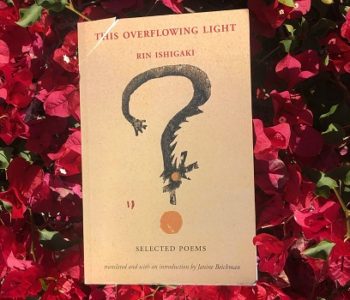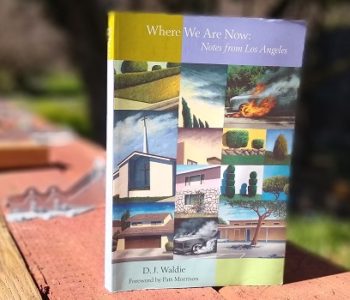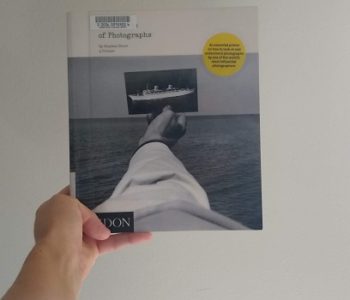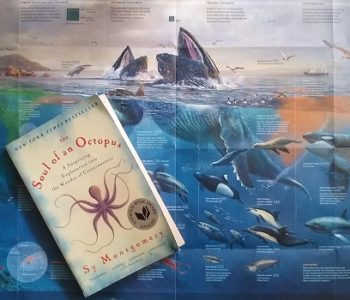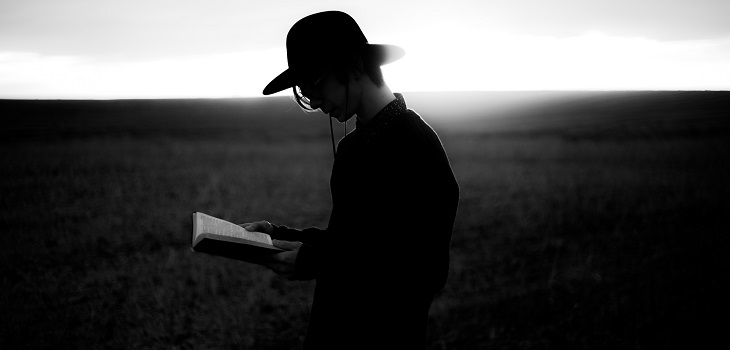 Book Review
Book Review
‘What We See When We Read’: A Tame Thrill
A BOOK REVIEW OF PETER MENDELSUND’S NONFICTION TEXT — WHAT WE SEE WHEN WE READ (2014)
Have you ever wondered, “What do I see when I read?” Well, Peter Mendelsund seems to have the answer to your question with the functionally named, What We See When We Read. Published in 2014, this text is a self-described “Phenomenology with Illustrations” and it does indeed teem with images. Such a graphic form behooves Mendelsund, whose author bio explains that he’s “the associate art director of Alfred A. Knopf…His designs have been described by The Wall Street Journal as being ‘the most instantly recognizable and iconic in contemporary fiction.'”
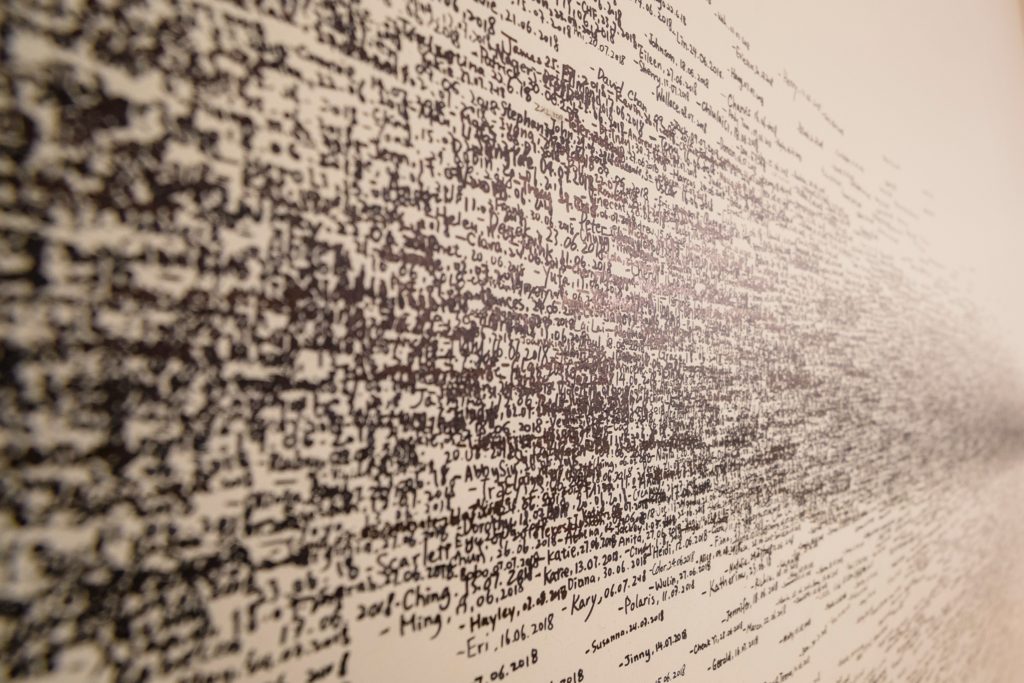
To refresh your memory, a phenomenology is “the study of structures of consciousness as experienced from the first-person point of view.” Thus, from the book’s subtitle, we can expect that we’ll be led through a descriptive investigation of our mental experience of reading a book.
Looking at the Book What We See When We Read
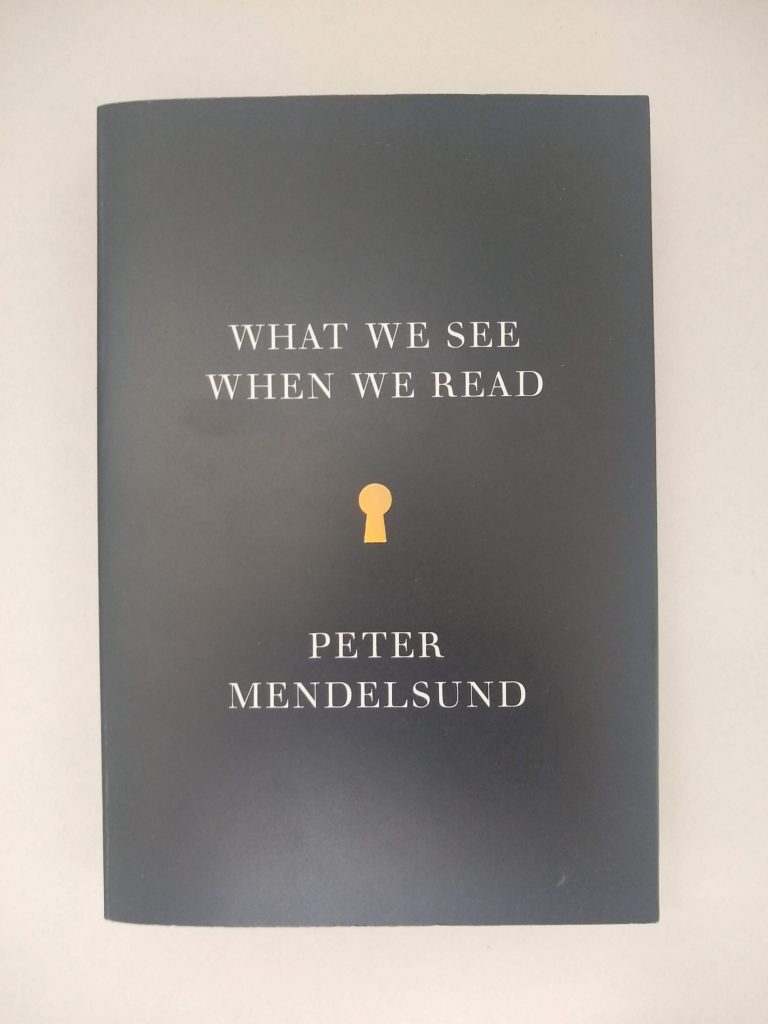
As a book itself, What We See When We Read is literally something to see. Although printed in black, white, and shades of grey, it’s explosively visual. Nearly every other page features a graphic — from movie stills, to portraits, to vintage clip-art of candles, pillars, and furniture, to diagrams, to author illustrations, to manuscript facsimiles, to typographical clusters, and beyond. The printed text frequently shuns the traditional moorings of the white-space of the page and runs rampant, gleefully. This is a book that wants the reader to actively see it as a printed book: a constructed, well-designed object.
By defining itself as something to be seen during the reading process, the form of What We See When We Read performs the content. The object reinforces its topic. The graphic insistence ensures the reader never forgets they’re engaged in the act of reading something distinct from what they’re used to consuming, enabling a greater consciousness of the mechanics of that act of reading.
Synthesizing the magic of picture books with the apparent erudition of academic texts, Mendelsund’s book is worth at least one go-around simply for its unique illustrative-linguistic synthesis. I know that I adopted it from the used bookstore because of its aesthetic appeal and the self-indulgent, meta-critical subject: what reader wouldn’t enjoy a pretty book about reading?
The Literary Thrill Ride Begins
Compared with the purely textual tomes I typically read, beginning What We See When We Read felt a bit like the moment before take-off on a thrill ride. In the front matter, the title overlays a book drawing and sprawls across six pages featuring first a black background, then a historical photograph of a snowy Russian city, then a painting of a 19th-century woman. All of this arrives before even the copyright page, immediately establishing the text as a meta-conscious, graphically immersive experience. It sets itself up as a conspicuously active text, rather than the passive pages we usually have to activate through attention.

Things get even more exciting with the opening line, “I could begin with Lily Briscoe” (2) from Virginia Woolf’s To the Lighthouse. Any book that starts with a Woolf reference is a book I’m prepared to follow through to the end. Mendelsund makes the point that he “cannot see the scene that Lily is attempting to capture” in her painting and he “cannot see Lily herself. She is, in my mind, a scarcely perceptible hieroglyph” (3).
When I read this, I literally nodded in agreement and thought, yes, yes, when we read about a character, we often don’t know exactly what they look like. We conjure and complete from the clues we are given.
I hungrily turned a few pages and was presented with the question, “What do we see when we read? (Other than words on a page.) What do we picture in our minds?” (7). I hungrily turned a few pages to find out and learned what we don’t see: “We imagine that the experience of reading is like that of watching a film…But this is not what actually happens” (14-15). Then what does happen?
I hungrily turned a few more pages and was met with yet another question, “But what does Anna Karenina look like? You may feel intimately acquainted with a character…but this doesn’t mean you are actually picturing a person. Nothing so fixed — nothing so choate” (16). A haunting 19th-century photograph of a woman with her face smudged out accompanies this assertion; the reader of What We See When We Read sees a featureless woman representing Anna. It’s quite an effective, almost macabre, visual pairing to the text’s point that fictional characters remain nebulous.
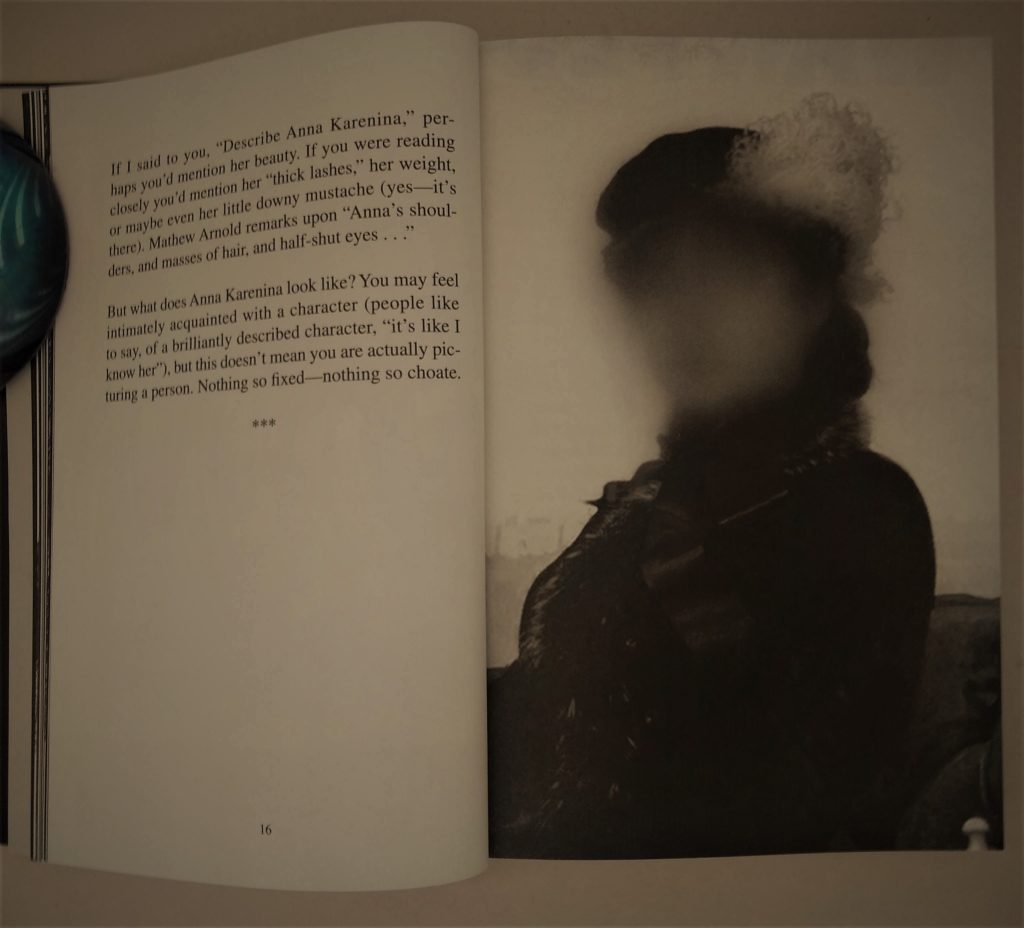
And yet, I couldn’t quite shake the feeling that Mendelsund already made this same point about Lily Briscoe a few pages back: we don’t really see literary characters as complete people.
The Literary Thrill Ride…Begins?
Indeed, over the course of the text, Mendelsund argues a similar point about Benjy Compson from Faulkner’s The Sound and the Fury (28). Then Karenin (36) from Anna Karenina. Then Ishmael (39) from Moby Dick. Then Mrs. Ramsay (52) from To the Lighthouse. Then Buck Mulligan (76) from Ulysses. Then characters in detective mysteries (125). Then Mrs. Reed (128) from Jane Eyre. Then back to Anna (258). And so on. Throughout, the accompanying images reiterate the basic featurelessness of characters: a police-composite sketch of Anna Karenina (18), who looks different from anything we imagined. A smiling face hidden behind hypnotic-slanted lines (21). An ear-shaped figure peeping from darkness (22). A nose-less character peering from darkness (25). And so on.
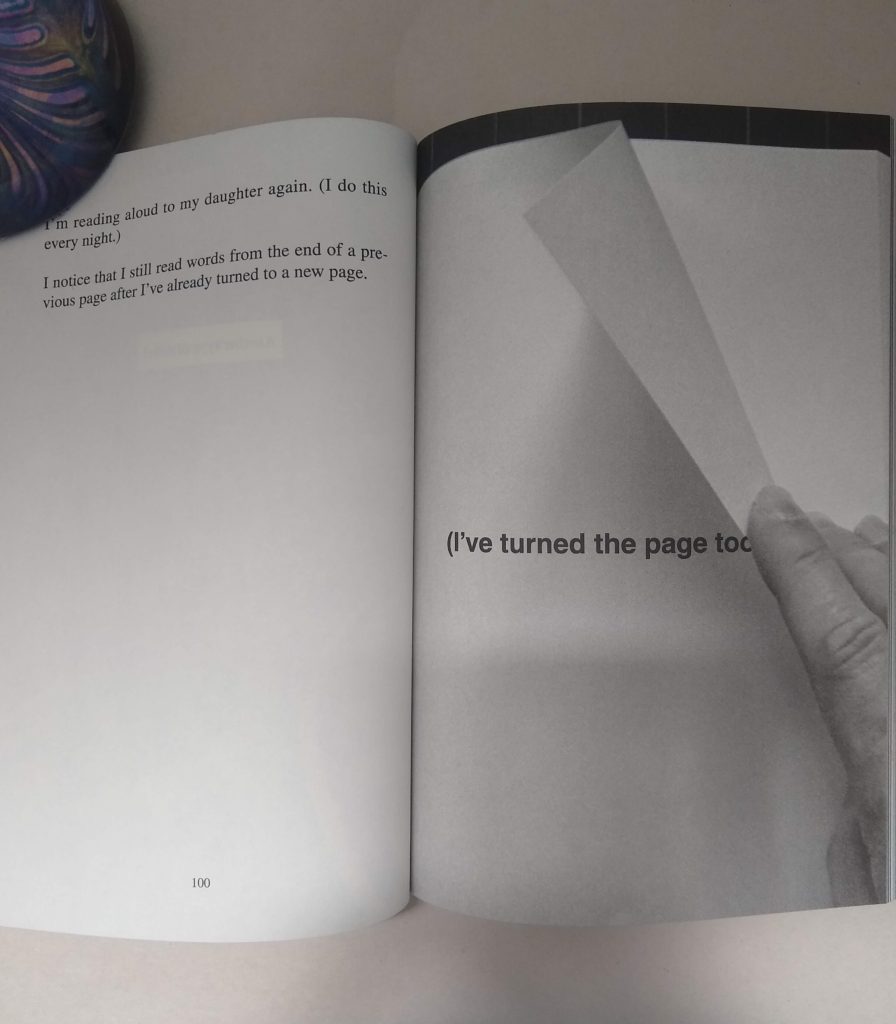
As the visual thrill ride rushed on, I began to get a bit bored. The loop-de-loos seemed to be repeating themselves. I could have sworn that I already whooshed past that revelatory text-image pairing before, and yet there it was again and again. My mind began to wander. I saw Mendlesund sitting at his drafting table with many Anna Karenina-esque clippings spread before him in a chaotic collage. Then I began to question whether that was actually him I was seeing. After all, his author photo only showed his front-side from the sternum up and who knows what his studio looked like. Like a character in a novel, I was conjuring a real man into an imagined, fragmented existence.
Ultimately, where Peter Mendelsund’s What We See When We Read stumbles is in its own evolution. It simply doesn’t develop beyond an echoic series of ideas about reading. Along the way, the beauty of this book as an object — along with its velocity (the typeface is a la large print tomes and each page generally has more white/grey/black space than words) — begins to feel almost gimmicky. The visuals, once exhilarating, come to seem like they were included to distract from the runty thesis. Mendelsund becomes trapped in his own initial assertion, as stated on the cover: What We See When We Read.
What We See When We Read*
*Fiction
Part of the problem arises from the author’s focus on fiction. What is ostensibly a book about reading — which implies everything from poetry to academic texts to short stories to love letters — is actually a book about reading classic novels, and more specifically, “seeing” the characters and settings in those works. As primarily a poet and a reader who is wooed by vivid figurative language in prose as opposed to character development and plot, I already feel excluded from Mendelsund’s exclusive collective voice. Of course, he can’t cover every mode of reading in one text, but across 400-odd pages, there’s room for much more exploration off the narrow path he carves out. I want him to explore how we “see” different types of texts; indeed, how do the mechanics of each form/medium affect what flows through our brain? He half-heartedly spends about two pages (not kidding) in the entire book on texts that are not novels.
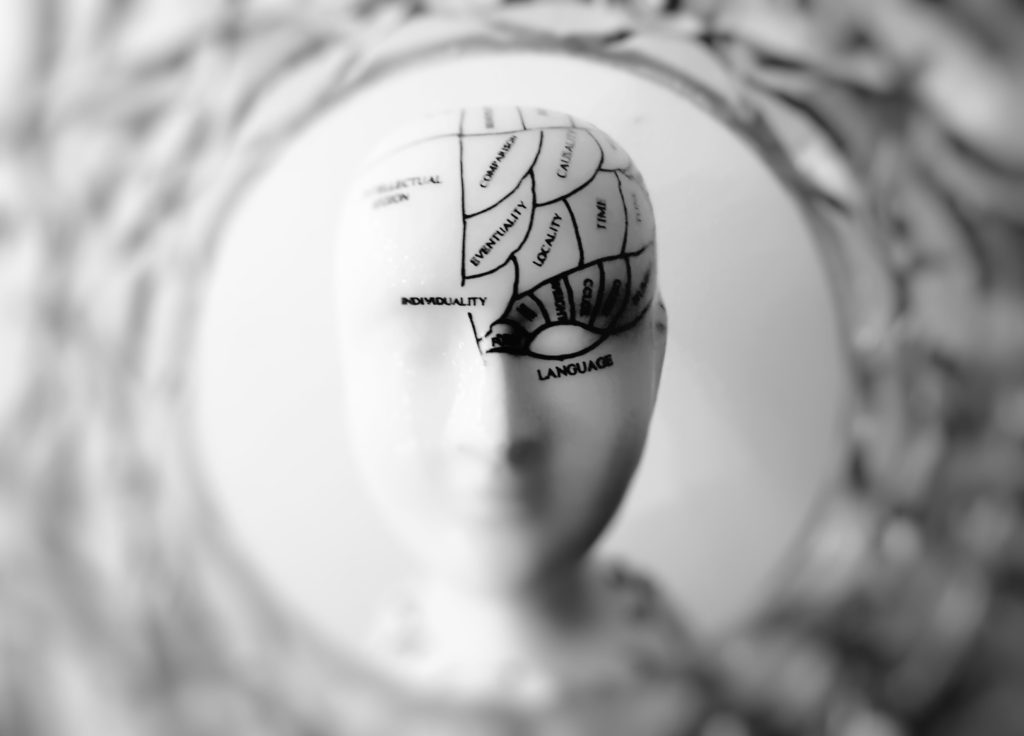
What Mendelsund Sees When We Read
Another problem is that Mendelsund allows his subjective reading biases to advance his overall argument. For example, he argues, via Barthes, that:
In the works of Robbe-Grillet, objects are shorn of allegorical meaning. They are not symbols, nor are they way stations along an associative chain. They do not mean; nor do they mean nothing. For Robbe-Grillet, they simply are.//
What We See When We Read by Peter Mendelsund pp. 271-2
A quarter tomato that is quite faultless, cut up by the machine into a perfectly symmetrical fruit. The peripheral flesh, compact, homogeneous and a splendid chemical red, is of an even thickness between a strip of gleaming skin and the hollow where the yellow, graduated seeds appear in a row, kept in place by a thin layer of greenish jelly along a swelling of the heart. This heart, of a slightly grainy, faint pink, begins — towards the inner hollow — with a cluster of white veins, one of which extends towards the seeds — somewhat uncertainly. Above, a scarcely perceptible accident has occurred: a corner of the skin, stripped back from the flesh for a fraction of an inch, is slightly raised. //
…(Do we see Robbe-Grillet’s tomato with more clarity and richness than we do, say, Eve’s apple?)//
I don’t.”
Well I certainly do. Robbe-Grillet’s description is fecund for interpretation and extraction of meaning, particularly with coy diction choices such as “splendid chemical red,” “a swelling of the heart,” and “a scarcely perceptible accident.” At the same time, its photo-realistic clarity clings to my brain more snugly than the vague apple of yore that Mendelsund glamorizes.
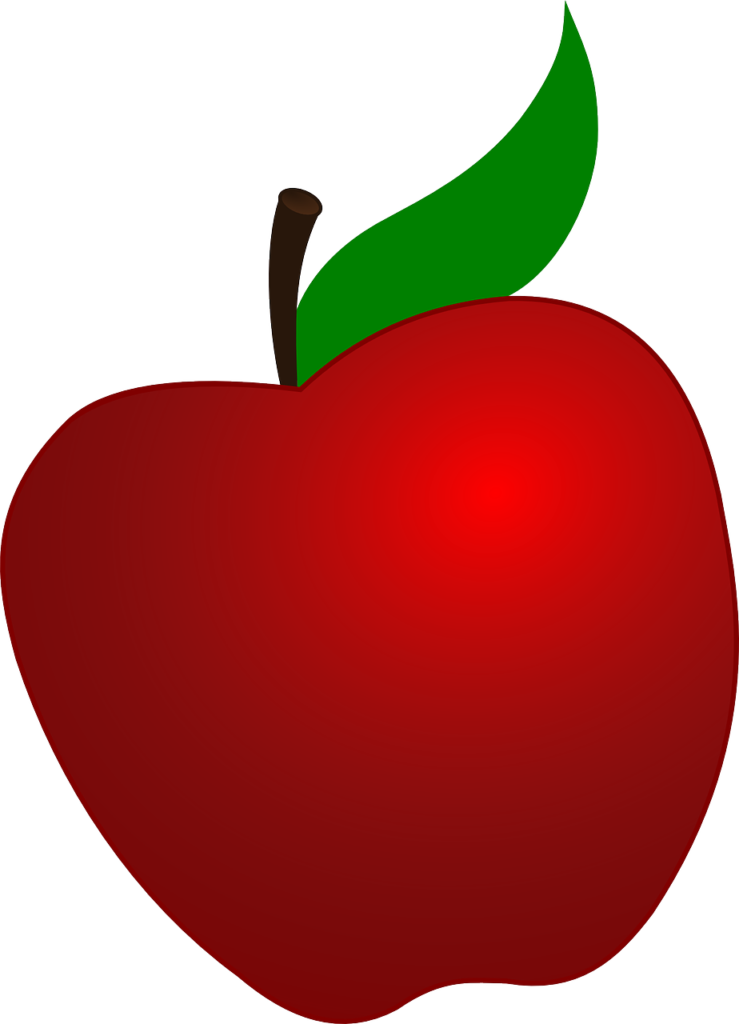

In another passage, Mendelsund argues:
Nabokov seems to be making the point that the greater the specificity and context for an image, the more evocative it is. (I’m not so sure.) Specificity and context add to the meaning and perhaps to the expressiveness of an image, but do not seem to add to the vividness of my experience of an image — that is, all this authorial care, the author’s observation and transcription of the world, does not help me to see. They help me to understand — but not to see. (At least, when I examine my responses to these types of descriptions, I do not perform any better in my attempts to envision the author’s world.”
What We See When We Read by Peter Mendelsund pp. 135
Because Mendelsund’s assertion isn’t based on anything other than his opinion, I can just as easily claim that as a reader, specificity and context do add to the vividness of my experience of an image. Authorial care and attention to detail do help me to better envision their literary world. And indeed this is true — Mendelsund and I are just very different readers.
Another qualm I have with this passage is that it pivots on a semantic quibble. Yes, we’re not actually “seeing” content when we read in the sense of light passing through our corneas, etc., but do readers actually believe they literally, physically “see” the things described by words on a page? I’m gonna’ say no. But Mendelsund is willing to dismiss the importance of vivid imagery for the sake of arguing that he’s technically not “seeing” any better when an image is more carefully crafted.

In short, Mendelsund considers his own literary preferences to be proof of what any other reader wants. He makes his personal, universal and this alienates me as a reader. When he argues that, “When we want to co-create, we read. We want to participate; and we want ownership. We would rather have sketches than verisimilitude — because the sketches, at least, are ours” (198), I don’t wish to be included in this collective voice that desires sketches — because, to quote Mendelsund, “I don’t.” I like when authors linger and ponder the smallest bumps in the oak bark. I prefer verisimilitude to sketches; I don’t want to hear about just the “rough-skinned oak.” I want more; I want the piece to present the vibrancy of my experience of reality to me. Neither of us are wrong , but the author’s insistence on this reader preference as fact in his phenomenology is off-putting.
In Conclusion
As a whole, What We See When We Read by Peter Mendelsund feels myopic and fragmented. The book’s visual theatrics are entertaining, but simultaneously make for a choppy ride through the waters of his thesis. The reader is given philosophical chunks to click clack together, but these pieces of ore aren’t comprehensively arranged into a nicely balanced cairn that compels me to believe that this is what I see when I read. Instead, I am convinced that this is what Peter Mendelsund imagines he sees when he reads — and I don’t particularly identify with it.
All this is not to say that there is no value in this text. For example, the assertion that “we colonize the book with our familiars; and we exile, repatriate the characters to lands we are more acquainted with” (211) is a pithy evaluation of the imaginative, almost violent omnipotence each reader wields with each book they pick up. And there are many more such insights.
It’s just that just as much content throughout falls flat. The two-page diagram that measures “agency,” “vividness,” “transparency,” and “effect on independent objects” for what appear to be different modes of consciousness (385) is one such case. Not only does the Mendelsund fail to contextualize and explain the graphic, the measurements seem almost arbitrary. It’s simply dead weight in a book handling an already complex subject.
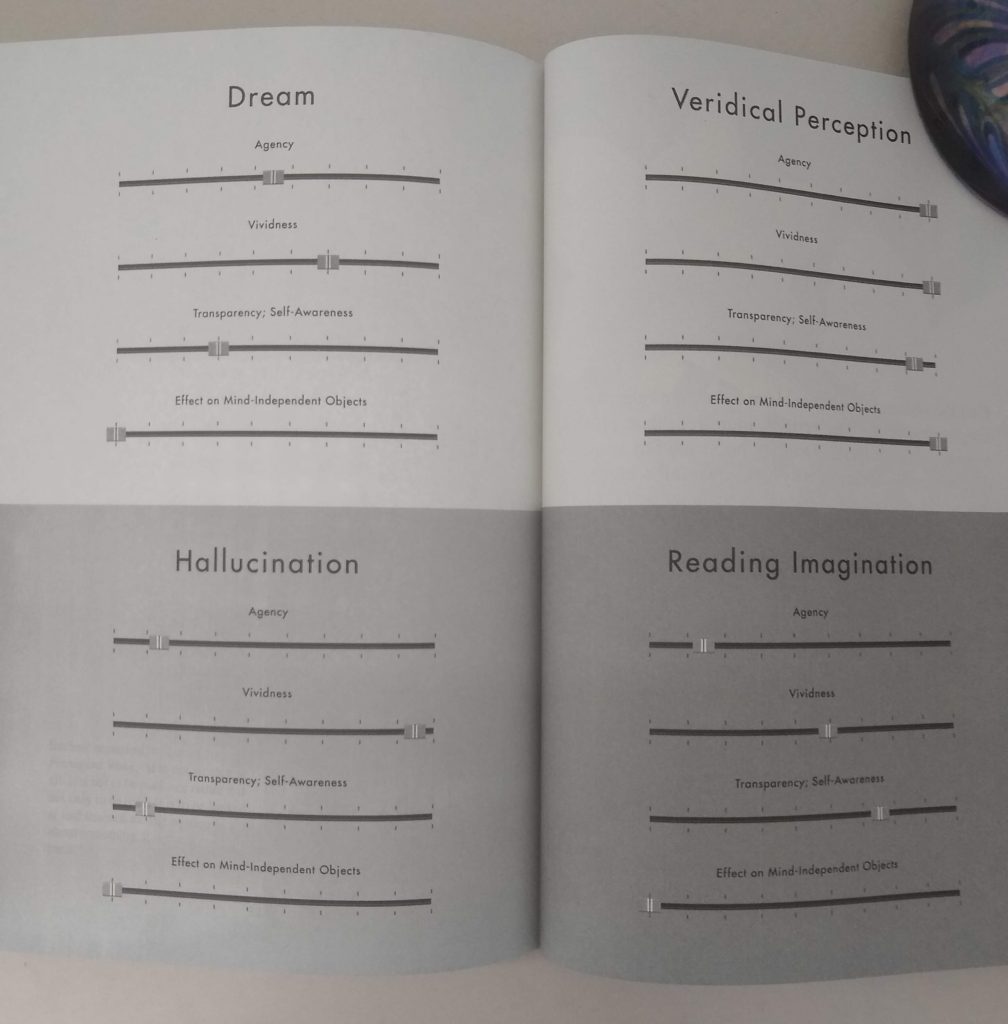
In the end, for all the graphic theatrics, What We See When We Read offers only a tame thrill. It’s a quick enough read that you can roll through it once, but don’t expect a deep dive into the poetry of the reading experience. In fact, don’t expect any poetry at all.
ISBN of Edition Read: 9780385528788
Notes of Oak Literary Blog Book Review Score for: What We See When We Read by Peter Mendelsund
5/10
